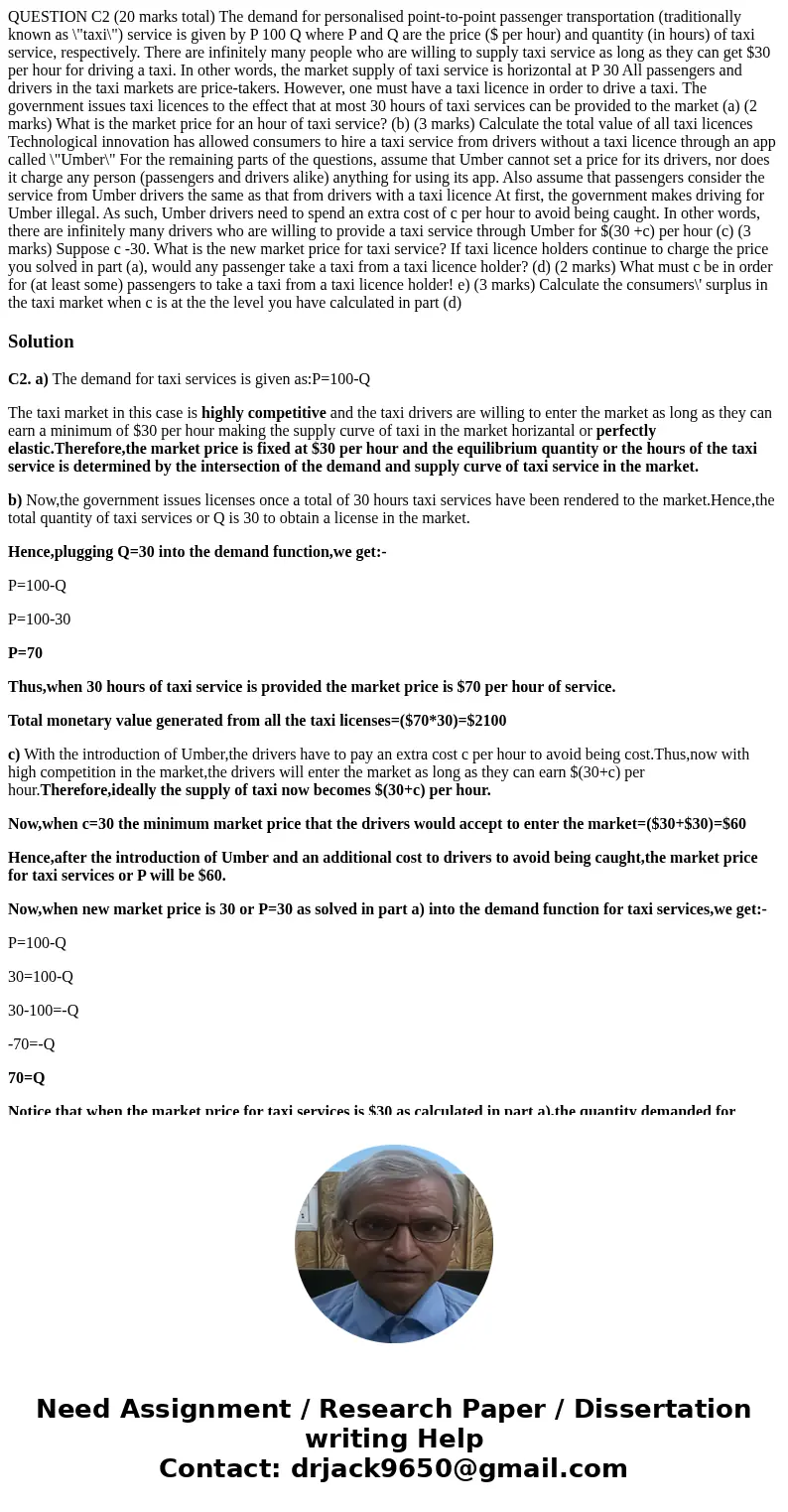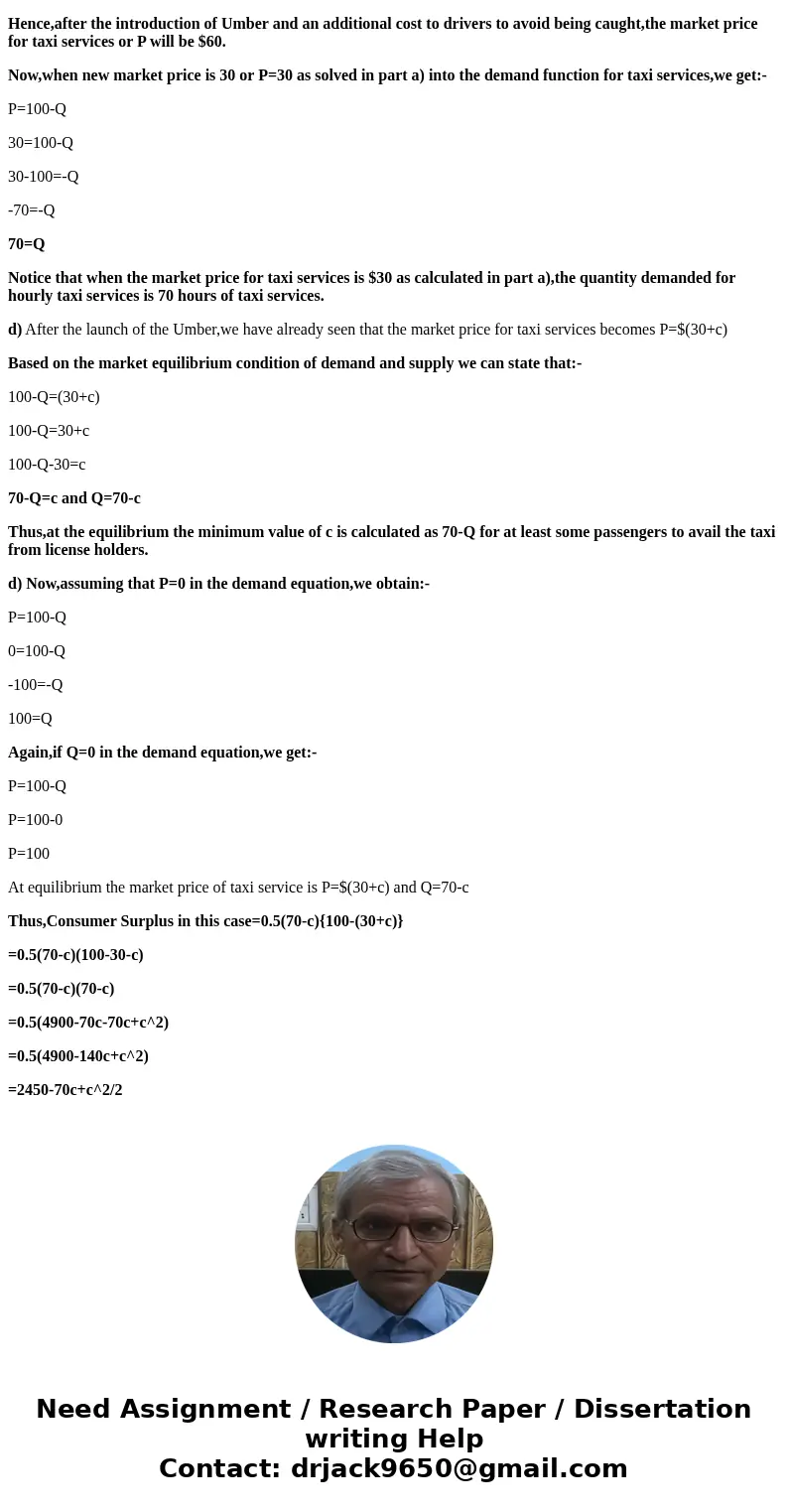QUESTION C2 20 marks total The demand for personalised point
Solution
C2. a) The demand for taxi services is given as:P=100-Q
The taxi market in this case is highly competitive and the taxi drivers are willing to enter the market as long as they can earn a minimum of $30 per hour making the supply curve of taxi in the market horizantal or perfectly elastic.Therefore,the market price is fixed at $30 per hour and the equilibrium quantity or the hours of the taxi service is determined by the intersection of the demand and supply curve of taxi service in the market.
b) Now,the government issues licenses once a total of 30 hours taxi services have been rendered to the market.Hence,the total quantity of taxi services or Q is 30 to obtain a license in the market.
Hence,plugging Q=30 into the demand function,we get:-
P=100-Q
P=100-30
P=70
Thus,when 30 hours of taxi service is provided the market price is $70 per hour of service.
Total monetary value generated from all the taxi licenses=($70*30)=$2100
c) With the introduction of Umber,the drivers have to pay an extra cost c per hour to avoid being cost.Thus,now with high competition in the market,the drivers will enter the market as long as they can earn $(30+c) per hour.Therefore,ideally the supply of taxi now becomes $(30+c) per hour.
Now,when c=30 the minimum market price that the drivers would accept to enter the market=($30+$30)=$60
Hence,after the introduction of Umber and an additional cost to drivers to avoid being caught,the market price for taxi services or P will be $60.
Now,when new market price is 30 or P=30 as solved in part a) into the demand function for taxi services,we get:-
P=100-Q
30=100-Q
30-100=-Q
-70=-Q
70=Q
Notice that when the market price for taxi services is $30 as calculated in part a),the quantity demanded for hourly taxi services is 70 hours of taxi services.
d) After the launch of the Umber,we have already seen that the market price for taxi services becomes P=$(30+c)
Based on the market equilibrium condition of demand and supply we can state that:-
100-Q=(30+c)
100-Q=30+c
100-Q-30=c
70-Q=c and Q=70-c
Thus,at the equilibrium the minimum value of c is calculated as 70-Q for at least some passengers to avail the taxi from license holders.
d) Now,assuming that P=0 in the demand equation,we obtain:-
P=100-Q
0=100-Q
-100=-Q
100=Q
Again,if Q=0 in the demand equation,we get:-
P=100-Q
P=100-0
P=100
At equilibrium the market price of taxi service is P=$(30+c) and Q=70-c
Thus,Consumer Surplus in this case=0.5(70-c){100-(30+c)}
=0.5(70-c)(100-30-c)
=0.5(70-c)(70-c)
=0.5(4900-70c-70c+c^2)
=0.5(4900-140c+c^2)
=2450-70c+c^2/2


 Homework Sourse
Homework Sourse